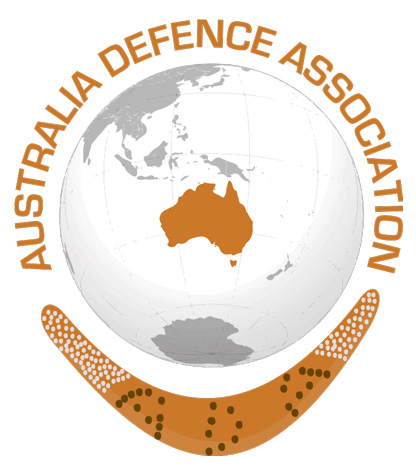The intervention into NT Aboriginal communities was never a military operation. Despite scaremongering by its opponents, and the resulting mythology, the Commonwealth intervention was always a civil function and operation - and always undertaken under civil law. The ADF only provided some logistic and administrative support to the civil agencies concerned. There has never been a "military intervention" of any sort into an indigenous community anywhere in Australia.
Letter to Crikey.com
Monday, 09 September 2013
(published Wednesday, 11 September 2013)
Bob Gosford, “Warren Mundine’s new military intervention into Aboriginal Australia” (Crikey, Monday), unfortunately repeats a complete and harmful myth about the NT intervention.
There has never been a “military intervention” of any description into an indigenous community in the Northern Territory or elsewhere.
The continuing NT intervention, for example, has always been a civil-government response with the civil authorities always in charge and always under civil law.
Both at the ministerial and departmental (FaHCSIA) level.
All the defence force has done is to assist the civil authorities, through the various implementing departments and agencies, with logistic and administrative support.
The ADF has never been used in a law enforcement role in indigenous communities. Such tasks have properly remained with the civil police and family/child welfare services.
No ADF personnel supporting the NT intervention have ever deployed with weapons, used force or been required to use force (except for self-defence as with any Australian citizen).
The operational head of the intervention on the ground was an ADF officer initially. However, he was seconded from the defence force to the Department of Families, Housing, Community Services and Indigenous Affairs (FaHCSIA), and appointed in a civil role.
This only occurred because the senior federal police officer originally arranged for the position became unavailable and the emergency nature of the intervention, at least initially, was used by the then government to justify such a step.
The Australia Defence Association warned against this at the time because of the risk it would be misconstrued, or deliberately misrepresented in an inflammatory and sensationalist fashion by some opponents of the intervention.
Such misrepresentation and scaremongering subsequently occurred. Such as ridiculous and indeed nasty claims that the “army was coming to grab children”
As the ADA continues to remind all Australians, governments of all political persuasions need to take great care not to risk the staunchly apolitical status of our defence force in Australian society by using the ADF in situations of party-political or major social controversy.
This underlies the historical reluctance to use the ADF in activities such as domestic law enforcement and strikebreaking.
It is not unusual, however, for federal or state governments to call on ADF assistance in national emergencies where no controversy is involved.
The two most common criteria governing such assistance are that the resources of the civil community are exhausted and require supplementation (as with natural disasters such as bushfires, floods and earthquakes), or that capabilities peculiar to the ADF are required (as with open-ocean search and rescue).
As background, military assistance rendered to civil authorities falls, constitutionally and professionally, into two definite categories: force and non-force situations.
ADF use, or potential use, of force to aid civil authorities enforce law and order within Australia is extremely rare and has only occurred three or four times (all cases of serious riot) since federation.
Contingency plans to assist police services with an assault on terrorist strongholds (where such measures are beyond police capabilities) also fall into this category but no actual situation requiring such assistance has arisen.
Some offshore ADF assistance to the Customs and Border Protection Service, such as boardings of fishing boats (during anti-poaching operations) and other vessels (during counter-smuggling ones), can also fall into this category.
Non-force assistance covers everything else including:
- bomb disposal;
- firefighting;
- search and rescue;
- logistic, communications or ceremonial support to events from the Olympic Games down to local community fetes;
- infrastructure construction in remote communities (both indigenous and otherwise); and
- the continuance of essential services during natural disasters or (very rarely) prolonged industrial action.
ADF involvement in the Northern Territory intervention remains wholly a non-force situation.
To wrongly describe the intervention as “military” in nature is therefore particularly absurd.
Finally, Bob seems quite unaware of the extent that the Furthermore, the ADF, particularly the Army, has been working in and with outback Aboriginal communities since before World War II.
Army surveyors mapped most of Northern Australia from the 1920s to the 1980s. The Navy's coastwatcher networks have utilised Aboriginal members for nine decades.
Various Army Reserve medical and dental units have conducted their annual camps helping outback Aboriginal communities since the early 1950s.
The Army's various regional force surveillance and regional intelligence units across northern Australia have been often comprised of mainly Aboriginal diggers since the late 1970s.
Since 1997 Army engineers have been building houses and environmental health infrastructure in such communities, and running associated trade-training schemes, under the Army-Aboriginal Community Assistance Program (AACAP).
Since the early 1990s many members of the ADF have studied Aboriginal culture in detail while qualifying on Defence-sponsored cross-cultural awareness courses at Nungalinya College in Darwin.
Indeed the The ADF personnel providing the logistic support to the NT intervention wear their uniforms proudly and reassuringly because indigenous Australians are so used to the presence of our defence force supporting their communities or otherwise interacting with them.
Back to Letters: 2013

